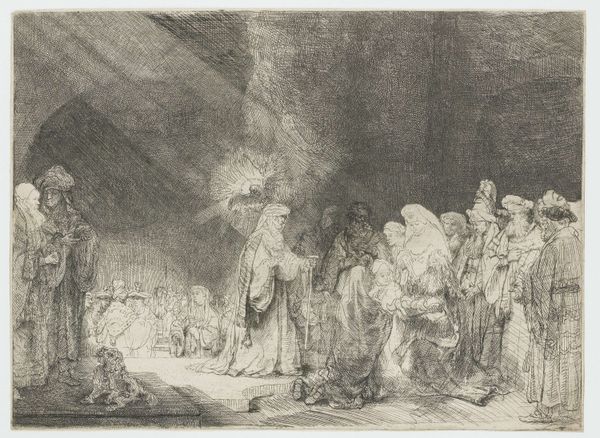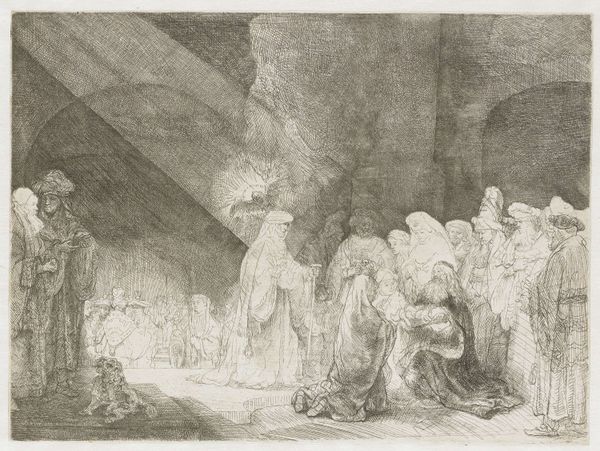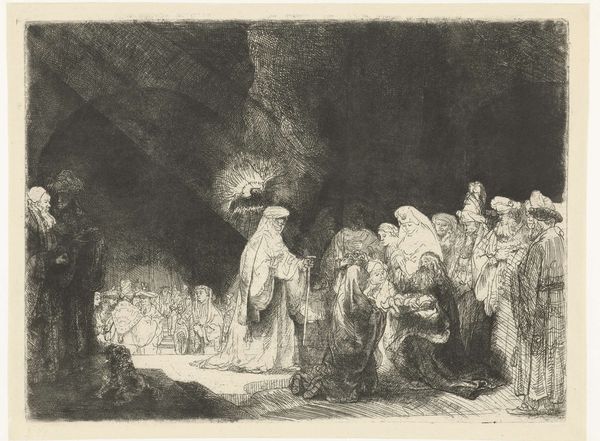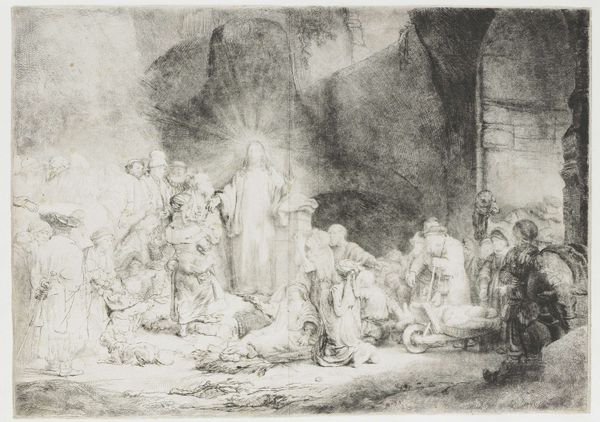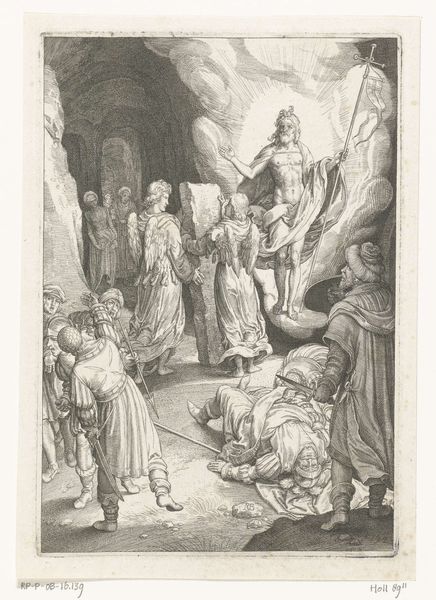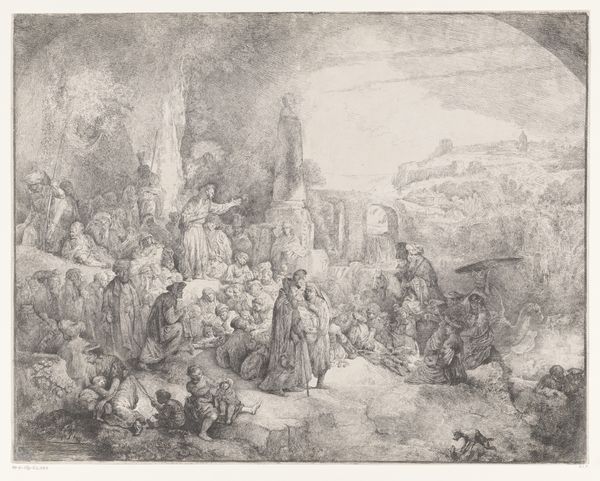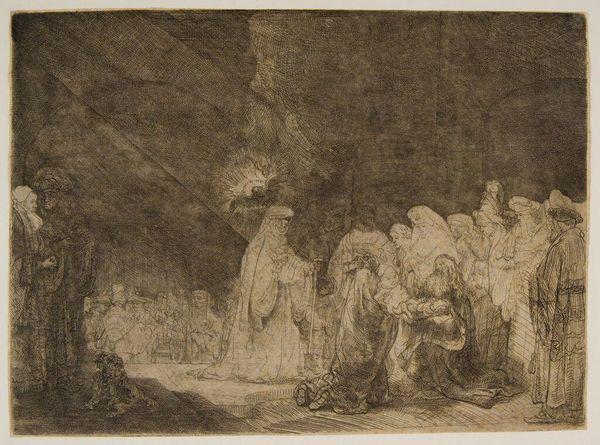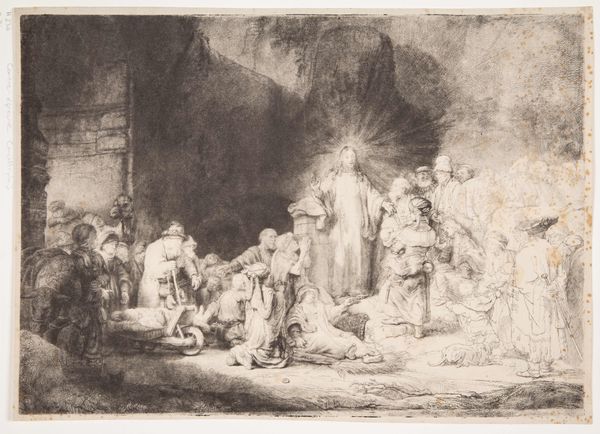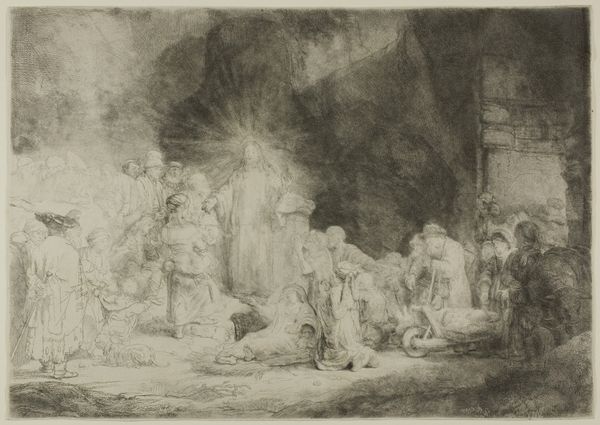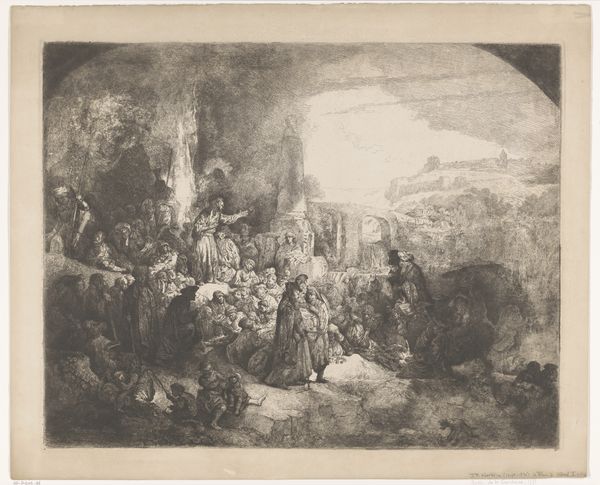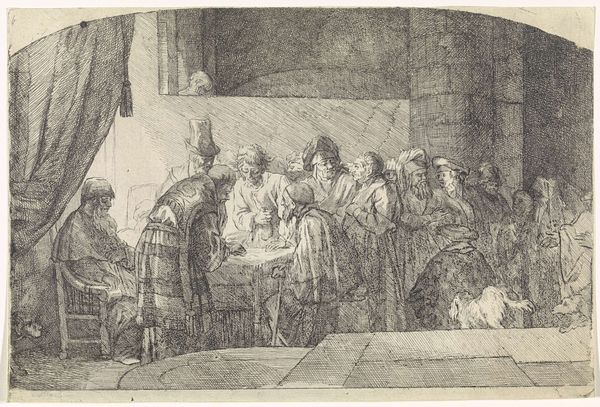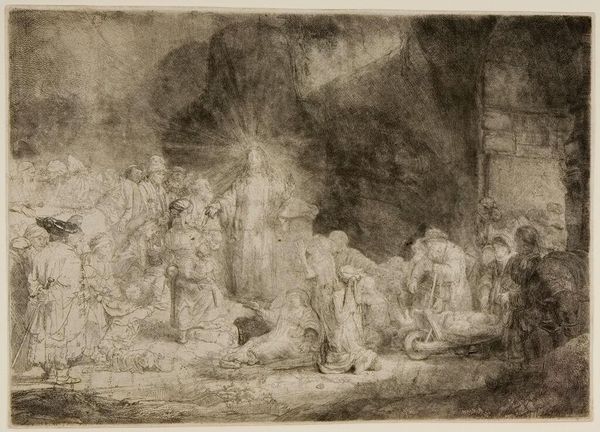
print, engraving
#
narrative-art
#
baroque
# print
#
history-painting
#
engraving
Dimensions: 213 mm (height) x 290 mm (width) (plademaal)
This print, "Fremstillingen i templet," was made by Rembrandt van Rijn, using the technique of etching. Etching begins with a metal plate covered in a waxy ground. The artist then draws through the ground with a needle, exposing the metal. When the plate is dipped in acid, the exposed lines are eaten away, creating grooves. These grooves then hold ink, which is transferred to paper under high pressure. The quality of line achieved by Rembrandt is remarkable. Notice how he uses a dense web of marks to create areas of deep shadow, and a more sparse application to suggest light. Look closely, and you can see how he varies the weight and direction of his lines to create a sense of volume and texture. The amount of work involved in creating such a print is considerable; it is a testament to Rembrandt’s skill, and to the rich possibilities of the etching medium. Thinking about the material properties and the laborious, skilled processes involved allows us to appreciate the nuances of Rembrandt’s artistry. It challenges any distinction between ‘mere’ reproduction and creative vision.
Comments
No comments
Be the first to comment and join the conversation on the ultimate creative platform.
